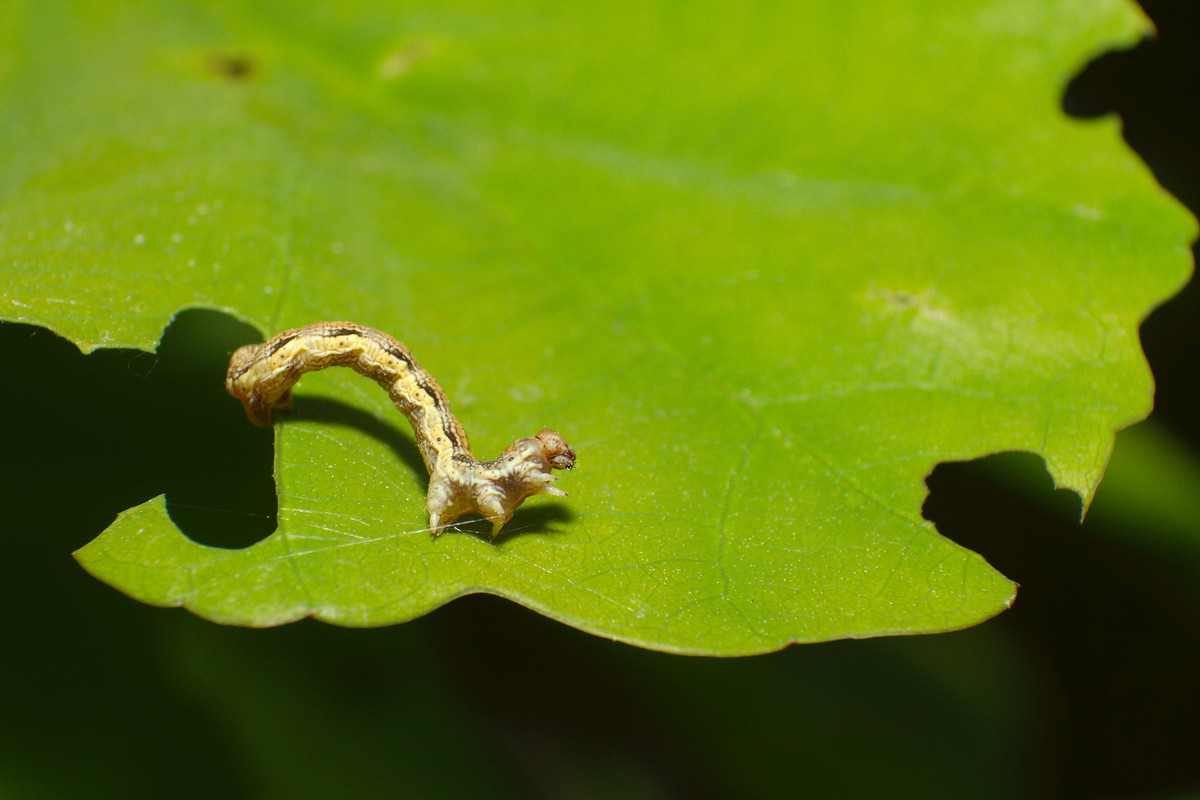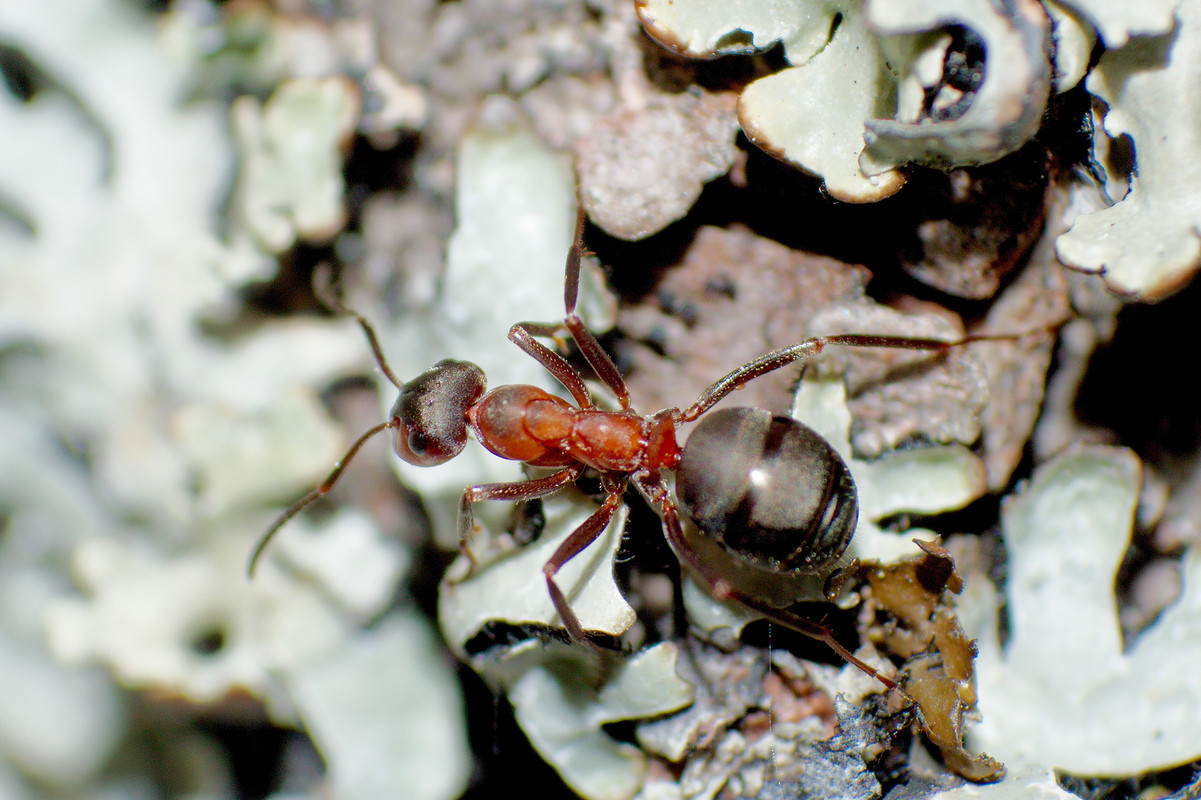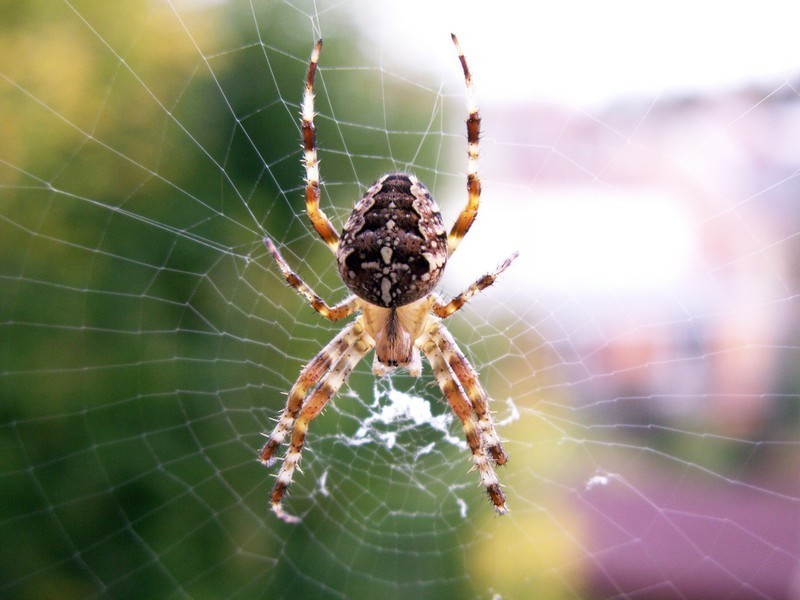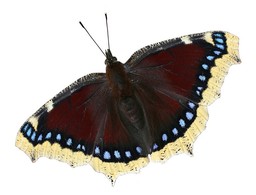6. Insects and spiders
Forest insects
 Adult insects can be recognized from their six legs. Insects also usually have large eyes.
Adult insects can be recognized from their six legs. Insects also usually have large eyes. The abdomen of the insect usually contain two pairs of wings, which make it possible for the insect to fly. Often, only one of the two wing pairs is actually used to fly, whereas the other pair of wings is used to protect the flying wings.
Many insects undergo a complete metamorphosis. The insect egg hatches into an insect larva, which usually eats plant parts. In time, the larva grows and finally pupates. The pupa hatches into an adult insect, such as a butterfly.
Insects can be either herbivores or predators.

The complete metamoprhosis of a swallowtail butterfly: the egg hatches into a larva, the larva grows into a pupa, and the pupa hatches into an adult butterfly.
Groups of insects

The most common groups of insects that you can find in a forest are butterflies, beetles and hymenoptera.
The larvae of many insects, such as butterflies, are herbivores. This is why larvae often create holes in plant leaves, or dig inside berries.
Many beetles, on the other hand, are predators. They gain their energy by eating other insects.
Insects
Ants
 Ants are insects: they have six legs. They are hymenopterans with bending antennae and thin abdomens.
Ants are insects: they have six legs. They are hymenopterans with bending antennae and thin abdomens. Ants are important inhabitants of forest ecosystems. Their success is based on their mass power, which means their ability to form and maintain large communities. In addition, ants have strong jaws and quick feet, which make them very well adapted to life in the forest.
The anthills found in the forest are not built by individual wood ants. Instead, they are the result of the concentrated efforts of thousands of ants living in the same ant colony.
Ant colonies have strict hierarchies. They depend on and are ruled by a female queen. In many cases, one nest can contain multiple queens, and one colony can contain multiple nests.
The majority of the ants in a colony are workers. They are female ants. Usually, all the workers of an ant colony are the offspring of one or two queens. They do not reproduce themselves at all.
The genes of the worker ants are transmitted to the next generation via the queen, as the workers feed and take care of the queen and the offspring it produces. Male ants spend most of their time inside the nest, waiting for their courtship flight. An anthill contains a large amount of eggs and larvae, which are fed by the workers.
Ants are predators. They prey on other insects, spiders, and even animals much larger than them.
Spiders
 Spiders are not insects. Instead, they are arachnids. This can be seen in the fact that they have eight legs instead of six. In addition, spiders have no wings.
Spiders are not insects. Instead, they are arachnids. This can be seen in the fact that they have eight legs instead of six. In addition, spiders have no wings. Spiders are predators that eat insects. All spiders are capable of producing silk, but only some of them use it to build intricate, hanging webs for preying on insects.
The cross spider is one of these web-building spiders. When its web is ready, the spider retreats to a hidden location and waits for an insect to fly into the web. When this happens, the insect is caught and the spider uses its poison to tranquilize its prey.
Terminology
| Term | Explanation |
|---|---|
| insect | A small invertebrate with six legs. Most insects can fly. E.g. bees and ants. |
| spider | A small invertebrate with eight legs. Spiders are predators. Some spiders make webs. |
| metamorphosis | The development of an insect through various stages: egg -> larva -> (pupa) -> adult. |



